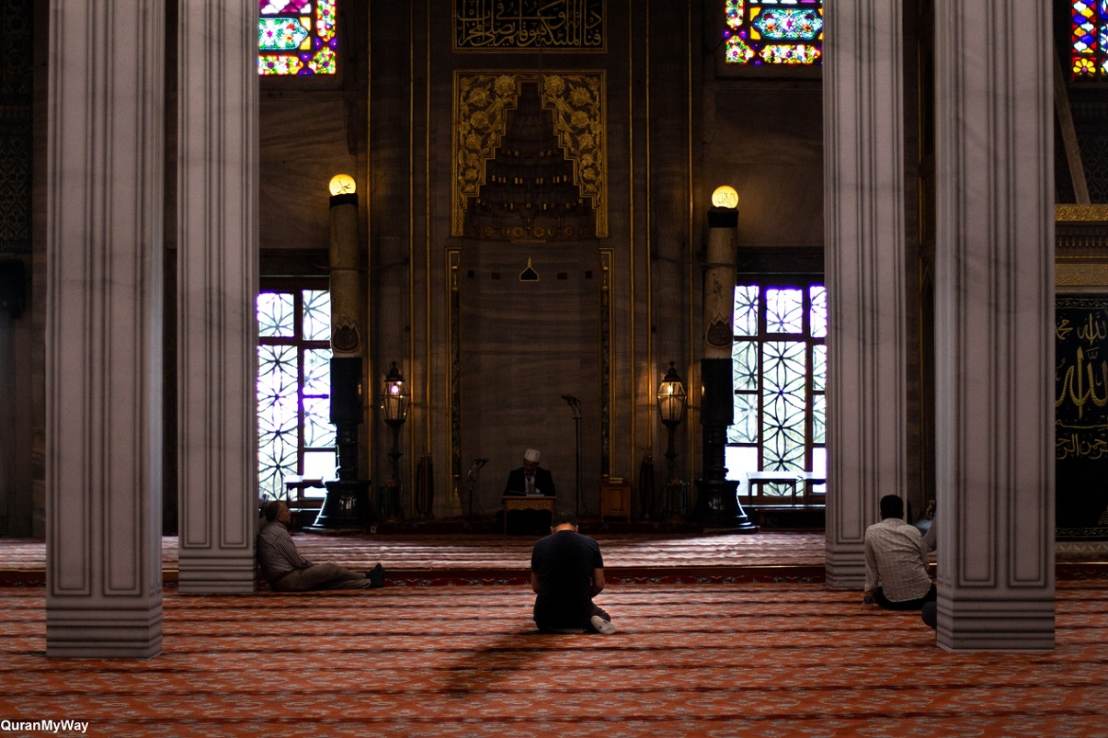Quran ( Introduction, Organization, Contents)
1-Introduction
Quran means reading or recitation. However, the word has specifically come to mean the Quran revealed to Prophet Muhammad. The Qur’an is that the foundational book of Muslims and, in fact, of the Arabic . Muslims believe that the Quran is that the complete and authentic record of the first revelations, claimed by the Prophet to be the literal Word of Allah.
They believe that no one has the authority to change the Quran since every word within the Quran is that the literal word of
Allah.
Over the ages, the Qur’an has been translated in dozens of languages throughout the planet , but only the Arabic text is taken into account the authentic Quran. there’s complete agreement on one text of this Arabic Quran by Muslims of all schools of law, of all theological and philosophical leanings, and of all ethnicities and nationalities.
The Qur’an is additionally memorized by many thousands of individuals and read by Muslims on all occasions; it’s
2-ORGANIZATION
The Quran is organized in 114 chapters called Surahs which contain 6237 ayahs (verses or signs) of varied lengths. more than three-fourth (86 out of 114) of the Surahs were revealed during the 13 years of the Prophet’s mission in Makkah; the remaining 28 were revealed during the entire 10 years of his life in Madinah. The Surahs are foundational divisions.
For convenience of reading the book during a month, it’s divided into 30 equal parts (each called a Juz’), and for reading it during a week, it’s divided into 7 parts (called a Manzil). it’s said that the Makkan Surahs primary affect the fundamentals of the belief and therefore the Madinan Surahs are about the practice of faith. This, at best, is an oversimplification.
All Courses
The longest Surah is that the other and has 286 Ayahs and therefore the shortest (103, 108, and 110) are toward the top and have 3 Ayahs each. But, beyond this general observation, one can easily demonstrate a lack of order by size of the Surahs.
After the 5th Surah, the order by size breaks down. for instance , the 6th Surah (with 165 Ayahs) is shorter, and not longer, than the 7th (with 206 Ayahs); the 8th (with 75 Ayahs) is shorter than the 9th (with 149 Ayahs); and therefore the 15th (with 99 Ayahs) is shorter than the 16th (with 148 Ayahs). The reverse are often shown at the end of the Book. Surah 95 (with 8 Ayahs) is shorter, not longer, than Surah 96 (with 19 Ayahs) and Surah 103 (with 3 Ayahs) is shorter than Syrah 104 (with 9 n Ayahs).

It is also often stated that the Surahs are arranged during a “reverse” chronological order of the revelation. If this were true, Surah 9 would be Surah one or two, and every one the start Surahs would be Madani and every one at the top would be Makkan. But this is often not the case. Seven of the first 20 Surahs are from the Makkan period and three of the last 20 Surahs (98, 99, and 110) are from the Madani period.
In contrast with the above mentioned speculations, the Muslims believe that the arrangement of the Quran decided by the Prophet himself, under guidance from God. They see during this arrangement a coherence that’s suitable for all people and for all times to return.
3-THE CONTENTS
The Quran deals with Divine nature, God’s intervention in history, and spiritual lessons learned from observation of nature, from life, and from history. It deals with major themes which are often illustrated with bits of relevant stories of previous prophets and of by-gone cultures, kingdoms, and empires.
with matters associated with living a good life. there’s emphasis on regular prescribed prayers, on constant supplications, on deep self evaluation, on regular fasting, on pilgrimage, to the holy sites associated with the origins of the worship of 1 God, on specific rules associated with equity in inheritance .
Specifics and details of much of those are left to the Prophet to develop and demonstrate by practice. Beyond that, the Qur’an doesn’t dwell much on matters of ritual intrinsically or of laws and procedures.
The emphasis of the Qur’an are often seen from the names it uses for itself.
Names of Quran:
a number of these names are: Al-Huda (The Guidance), Al-Dhikr (The Reminder), Al-Furqan (The Criterion-for judging right from wrong), Al-Shifa (The Healing), Al-Mau`iza (The Admonition), Al-Rahmah (The Mercy), Al-Nur (The Light), Al-Haqq (The Truth), and Al-Burhaan (The Clear Argument).
It does not call itself a book of Law, of Science, or of procedural prescriptions. Only about 500 to 600 Ayahs are associated with rules and regulations and fewer than 100 of those are often directly implemented through legislation.














